Pierre de Fermat, painted posthumously in the 19th century by Robert Lefevre (1755-1830).
(Photo:Wikimedia Commons, Public domain)This post may contain affiliate links.
If you make a purchase, My Modern Met may earn an affiliate commission.

Pierre de Fermat, painted posthumously in the 19th century by Robert Lefèvre (1755-1830). (Photo:Wikimedia Commons, Public domain)This post may contain affiliate links. If you make a purchase, My Modern Met may earn an affiliate commission. Please readour disclosurefor more info.
just readour disclosurefor more info.
The great scientific minds of the Renaissance and Enlightenment often made contributions across myriad fields.Pierre de Fermatwas no exception.
His work has been appreciated and studied for centuries since his death in 1665.
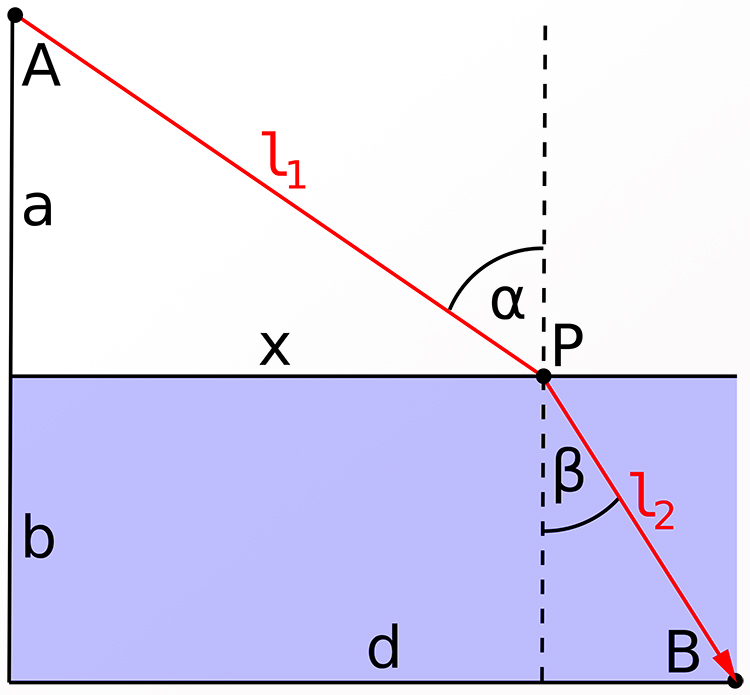
Fermat’s Principle, linking ray and wave optics. This shows the refraction of light at a flat surface, such as the meeting of air and water. (Photo: Klaus-Dieter Keller viaWikimedia Commons, Public domain)
This simple statement of mathematics seemed so trueand Fermat himself claimed to have a proof.
However, that proof has never been found.
For 358 years, generations of mathematicians struggled to prove what Fermat so confidently stated.

Photo:Stock Photosfrom AGSANDREW/Shutterstock
A statement so simple in appearance became math’s Holy Grail.
Who was Fermat?
Pierre de Fermat was born in late 1607 in Beaumont-de-Lomagne, France.
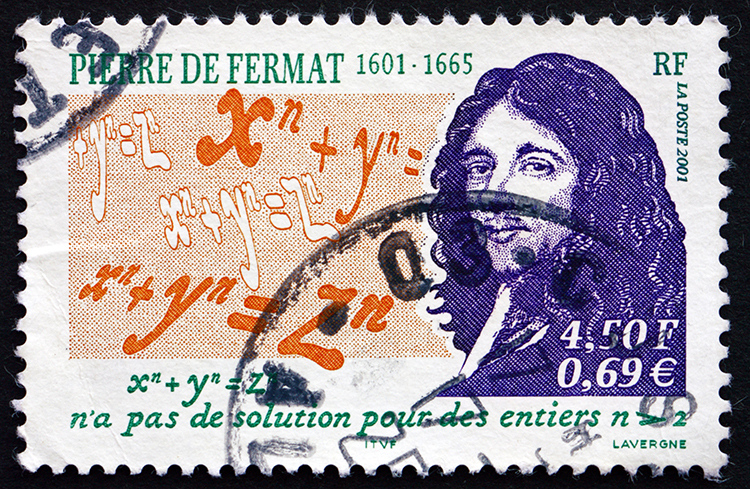
Photo:Stock Photosfrom BORIS15/Shutterstock
The child of a wealthy family, he attend school as a young man to study the law.
It was after his law training that Fermat began to seriously research mathematics.
Although he remained an active lawyer, Fermat was one of the most prominentmathematiciansof his time.
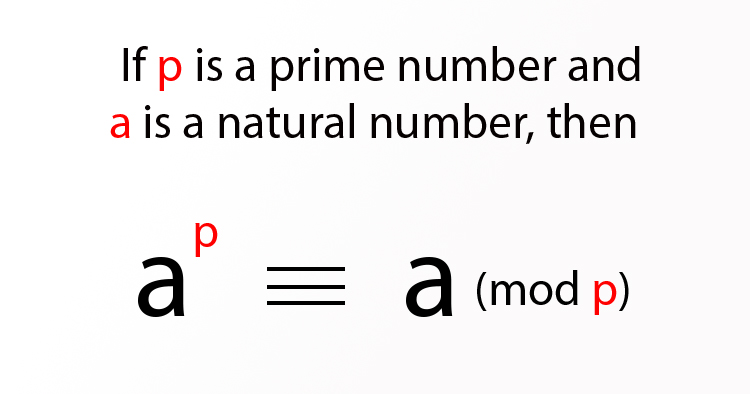
P.S. The “triple” equal sign is actually a congruence sign, used like an equal sign in modular arithmetic.
Fermat’s Principle, linking ray and wave optics.
This shows the refraction of light at a flat surface, such as the meeting of air and water.
Fermat worked with the curves resulting from equations.
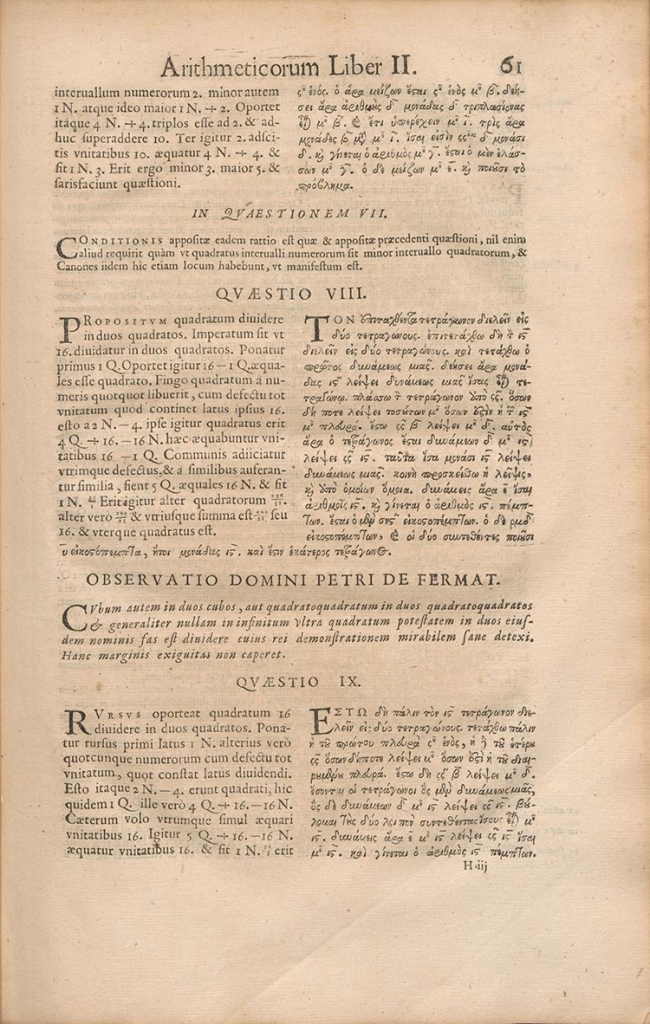
A 1670 edition of a work by the ancient mathematician Diophantus (died about 280 B.C.E.), with additions by Pierre de Fermat (d. 1665). Fermat’s note on Diophantus' problem II.VIII went down in history as his “Last Theorem.” (Photo:Wikimedia Commons, Public domain)
He discovered how to calculate maxima, minima, and tangents.
Doing just this would later become the point ofdifferential calculus.
Although Fermat’s method was rather different, Isaac Newton himself credited it as an inspiration.
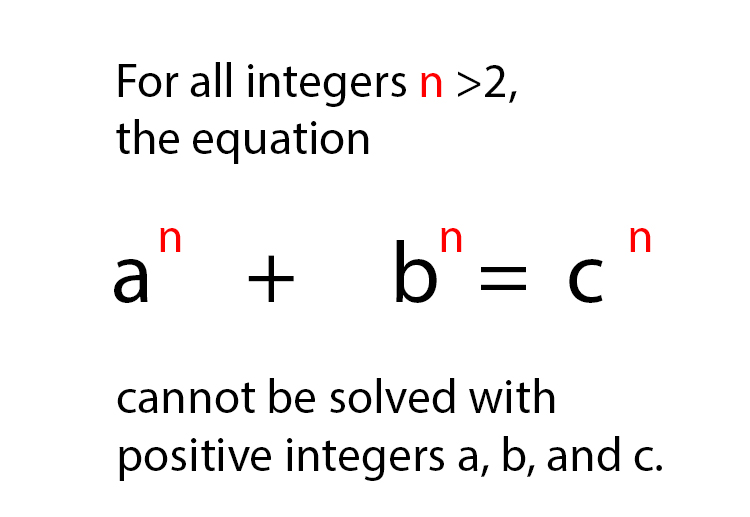
Like many great minds of the day, Fermat was part of theRepublic of Letters.
Fermat’s frequentcorrespondence with Blaise Pascalproved especially pivotal.
Together, the two are credited with the emergence of probability theory.
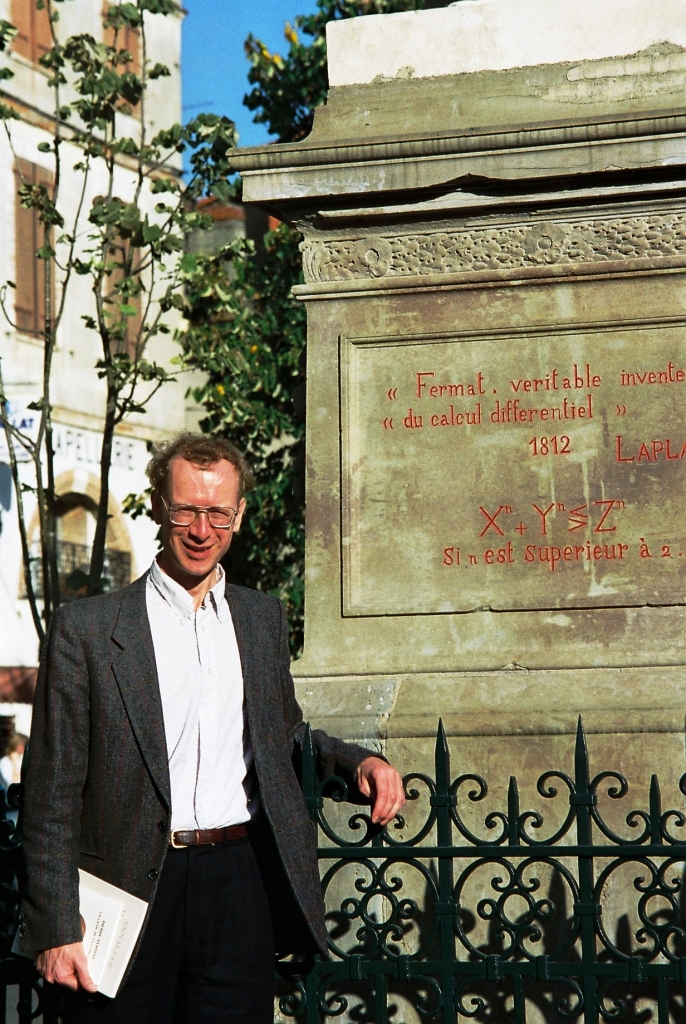
Andrew Wiles standing before a statue of Pierre de Fermat in Beaumont-de-Lomagne, France, where Fermat was born. (Photo: Klaus Barner viaWikimedia Commons,CC BY-SA 3.0)
What is Number Theory?
Photo:Stock Photosfrom AGSANDREW/Shutterstock
Fermat is perhaps best remembered for his contributions to the study ofnumber theory.
But to understand why Fermat’s work is so critical, first we must askwhat is number theory?
The short answer is the study of numbers, their properties, and how they relate to one another.
You know that there are 12 hours on the clock.
One hour from your start time, the clock will show 12.
Then, the clock will start it’s cycle from one to 12 all over again.
That is a number theory calculation, although you may never have known this.
In formal math parlance, this problem can be expressed as 11+5 (mod 12).
The mod 12 stands for modulus 12.
This means that, unlike normal addition, you are performing yourmodular arithmeticoperation.
There are only 12 possible numbers in a set, from one to 12.
The answer to any addition or subtraction problem will fall within this group when taken mod 12.
To do so, simply divide the sum by the modulus, and the remainder will be the answer.
For example, 54+61 is 115.
But 54+61 (mod 12) is 7.
This is because 12 goes into 115 nine times.
The remainder from this long division is 7.
By this principle, 19 (mod 12) is the same as 115 (mod 12).
What were some of Fermat’s other theorems?
Photo:Stock Photosfrom BORIS15/Shutterstock
Fermat’s Last Theorem is not the only discovery he is well known for.
Within the realm of optics, Fermat refined thelaw of refractionwith Fermat’s principle.
A famous number theory contribution of Fermat’s is known asFermat’s Little Theory.
and a prime number p will always have a special relationno matter what numbers you choose.
The triple equal sign is actually a congruence sign, used like an equal sign in modular arithmetic.
), with additions by Pierre de Fermat (d. 1665).
Fermat’s note on Diophantus' problem II.VIII went down in history as his Last Theorem.
Fermat postulated his theorem in the margins ofArithmetica, an ancient Greek mathematics text.
His son discovered and published his father’s theory later.
However, none ever materialized from his papers or correspondence.
Fermat’s Last Theorem is simpler in effect than his Little Theorem.
Pick three random positive numbers and try it on your phone calculator.
You will soon see whyalthough a conjecturethis theorem seemed so tantalizingly true.
(You will notice the exponents must be higher numbers than two.
A theorem must be true to apply beyond doubt in every case under its parameters.
For 358 years, a proof that the theorem always held true was elusive.
Enter British mathematicianAndrew Wiles.
By the 1980s, progress had been made towards a proof, led by experts in elliptical curves.
Wiles specialized in this area and took up the taskone he had dreamed about since childhood.
In six years, he worked in intense secrecy on the proof.
His conclusion of the talk proved an entirely different conjecture.
According to aNew York Timesarticle, his eureka!
moment was actually an understated final comment.
By logic and proofs already established, his proof of a different conjecture also proved Fermat’s Last Theorem.
The Princeton University professor who dreamed of solving a problem set in 1637 had at last done it.
Excitement spread through the world of pure math.
Countless distinguished scholars had neglected to even touch the conundrum, believing it was unsolvable.
In fact, it may have been in Fermat’s day.
The math used by Wiles was invented much later, and was not available to the early modern genius.
Under intense scrutiny, a flaw in the proof was later discovered.
It took Wiles a year to fix.
In 1994, he published the fix with former pupil Richard Taylor.
If he did not, he certainly spoke with the confidence of a genius.
Andrew Wiles standing before a statue of Pierre de Fermat in Beaumont-de-Lomagne, France, where Fermat was born.